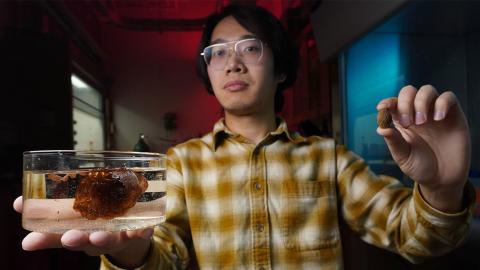Editor’s note: To read more about how UChicago is on the frontlines of the coronavirus pandemic, visit the Confronting COVID-19 website.
While health care professionals should have access to new N95 masks, the growing severity of the COVID-19 pandemic has resulted in severe shortages and reports of workers having to re-use masks.
A team of 60 scientists and engineers, students and clinicians from both the private sector and universities, including the University of Chicago, are unveiling N95decon.org, a website that synthesizes the scientific literature about mask decontamination to create a set of best practices to decontaminate and reuse this protective face covering during the current emergency.
“While there is no perfect method for decontamination of N95 masks, it is crucial that decision-makers and users have as much information as possible about the strengths and weaknesses of various approaches,” said Manu Prakash, an associate professor at Stanford University who helped coordinate the volunteer undertaking. “We aim to provide information and evidence in this critical time to help those on the front lines of this crisis make risk-management decisions given the specific conditions and limitations they face.”
The group examined hundreds of peer-reviewed publications regarding main methods of decontamination, and engaged academic and industrial experts in many conversations. Their report focuses on three of these methods: heat, ultraviolet light and vaporized hydrogen peroxide.
The team synthesized current knowledge on the three methods, exposing their documented strengths and weaknesses, and importantly, pointing out knowledge gaps in their application.
The scientists did not endorse any one method, but instead sought to describe the circumstances under which each could inactivate the virus provided rigorous procedures were followed. Devices that rely on heat, for instance, could be used under specific temperature, humidity, and time parameters. With ultraviolet C light, considerations involve making sure masks are properly oriented to the light so the entire surface is bathed in sufficient energy. They also found that the hydrogen peroxide method could potentially be used to decontaminate masks in volume – a recommendation that is backed by the U.S. Food and Drug Administration, which has already certified certain vendors to offer hydrogen peroxide vapor treatments on a large scale.
N95decon.org will help facilitate the rapid deployment of these emergency measures by pointing decisionmakers to sources of reliable and detailed how-to information provided by other organizations, institutions and commercial services. For example, the U.S. Centers for Disease Control on March 31 released a data-driven fact sheet and a detailed overview for implementing the same three decontamination methods.
By concisely documenting this critical information, health care workers, medical care administrators and public health professionals are better informed when making decisions about methods best suited to their specific circumstances, allowing them to develop more efficient operating procedures.
The researchers reiterated, however, that the best practice is to use new N95 masks whenever possible. “Decontamination approaches do not solve the N95 shortage crisis and should only be considered as emergency interventions with unknown safety and efficacy,” the group said in a statement. “We aim to provide information and evidence in this critical time to help decision-makers make risk-management decisions, given the specific conditions and limitations they face.”
The group will continue to work to develop new studies on N95 mask decontamination, both for basic science and real-world application.







